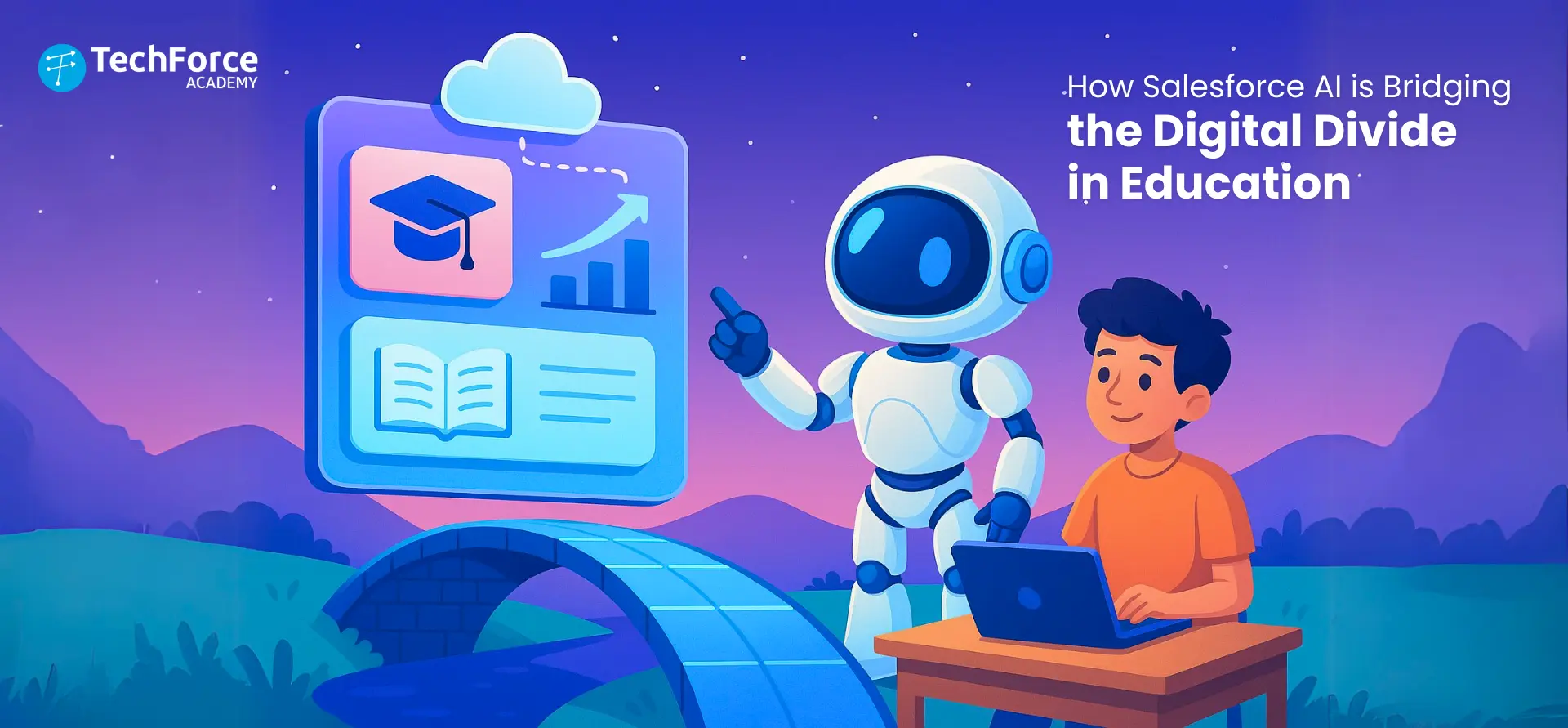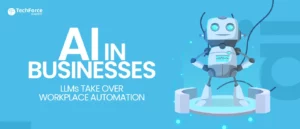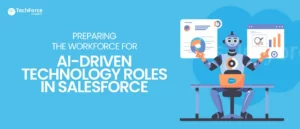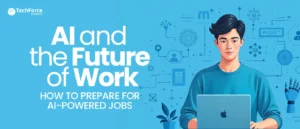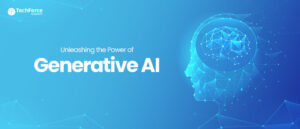As technology grows fast, not all students are moving forward with it. The digital divide in education is a real and growing problem. Many students still don’t have access to the tools they need to learn in today’s digital world. This creates unequal chances to succeed.
But there is hope. Salesforce AI is stepping up to help. Through smart ideas and strong partnerships, Salesforce is recognising the digital divide and working on bridging it in education. The company supports tools, training, and access so every student has a fair shot—no matter where they live or what their background is.
This blog shows how Salesforce is leading the way in making equitable education possible by building AI skills, boosting technology access for underserved students, supporting teachers, and creating inclusive learning environments for everyone.
The Digital Divide in Education: Why It Matters
The digital divide isn’t new, and in education, it means some students have access to new tools and others don’t.
Challenges Faced by Students Without Digital Access
In the past, students in poorer areas had fewer books or slower internet. Today, the problem has grown. With the rise of AI, students without digital access are falling even further behind. Many schools still don’t have the right tools to support AI in schools. About 30% of students in the U.S. don’t have strong internet at home. Without it, they miss out on:
- Online lessons and homework
- Educational videos and practice tools
- Contact with teachers outside of class
As AI-powered learning platforms become more common, this gap becomes more serious. In places where money is tight, students may share devices or go to public places just to do homework. The digital divide and education are closely linked—when one grows, the other suffers.
Without access to digital resources, students are limited in how they learn, what they learn, and how well they perform in school.
The Role of AI in Addressing Educational Inequities
AI-powered learning platforms can help fix this problem—if they’re used the right way. When schools and programs focus on fairness, bridging education gaps with AI becomes possible. AI can:
- Give students personalised lessons based on their needs
- Help teachers understand where students struggle
- Offer language support for English learners
When AI is used with care, it gives students a better learning experience, even if they start behind. But for this to work, schools need to make sure every student has technology access and that the tools are made for diverse learning styles.
Building AI Literacy for Every Student
We live in a world where AI is part of everyday life—from smart assistants to learning apps. That’s why AI skills are important. Students need to understand how AI works so they can use it wisely in school, jobs, and daily life.
Also read: Salesforce AI Associate Certification Guide and Tips.
Current Gaps in AI Education in Schools
But most schools aren’t ready. Only 37% of U.S. schools have a plan to teach students about AI. Often, AI in schools is added as a bonus topic, not something every student learns. That means students don’t learn:
- How AI makes decisions
- How to use AI tools responsibly
- What jobs might use AI in the future
Without this knowledge, students are less ready for the digital world. These gaps in AI education mean that only a few students—mostly in well-funded schools—get to build these important skills. This makes equitable education even harder to reach.
Salesforce’s Initiatives to Promote AI Literacy
Salesforce AI is working to close this gap by supporting AI education that is fair and thoughtful. These lessons are not just about coding. The company works with schools and nonprofits to bring AI lessons to more students. These lessons include:
- How to think critically about AI
- Ethical use of AI tools
- Real-world projects to build skills
Alex Swartsel, managing director of insights at Jobs for the Future, said at the summit that “We need to be able to learn how to learn,”. Students are ready for anything, especially in a world filled with changing tech.
Explore Salesforce Free AI Training and Certifications to bridge this knowledge gap.
Equity and Access: The Heart of the Issue
At the centre of this challenge is one idea: educational equity. That means every student gets the tools and chances they need—no matter their background. But in reality, many students are left out.
Some don’t have a laptop. Others don’t have internet at home. In big cities like New York, about half of low-income families struggle with online access. This limits what students can:
- Learn
- How they connect with teachers
- How they connect with classmates
How Salesforce’s Programs are Supporting Underserved Students?
Salesforce AI is working on these challenges by supporting schools and nonprofits that serve students who are often left behind. Through programs, grants, and partnerships, Salesforce is providing solutions for equitable access to education with AI.
The Salesforce Accelerator – AI for Impact is a program that gives funding and support to nonprofits that use AI to help students. These nonprofits also get access to Salesforce’s tools and expert help from employees.
An example of Salesforce-supported programs includes:
- Beyond 12 is a nonprofit to help first-generation college students. With Salesforce’s help, they built an AI-powered tool that pulls college info and shares it in simple language. This helps students make smarter decisions.
These programs are helping bridge education gaps with AI by putting the right tools in the hands of students and educators. They show how using Salesforce AI to provide equal learning opportunities is not just a dream—it’s already happening.
Also read: Salesforce for nonprofits.
How Salesforce AI Is Transforming Learning Experiences
More and more, students and teachers are using AI in the classroom. A recent report showed that 60% of educators and nearly half of high school students use generative AI tools in some way.
But AI isn’t just for quick answers or shortcuts. It can be used to help students think more deeply, ask better questions, and become more engaged. When used well, AI supports AI-powered learning platforms that allow for personalised learning with AI, where each student learns at their own pace.
For example:
- College Possible, a nonprofit backed by Salesforce. They created a platform that helps coaches guide students using AI. It gives tips, tracks progress, and helps students plan for college. It’s fast, smart, and easy to use.
AI tools help create inclusive learning environments where students and teachers feel supported, not stressed.
See how The Role of AI in Salesforce is shaping the future of learning.
Supporting Educators and Students on the AI Journey
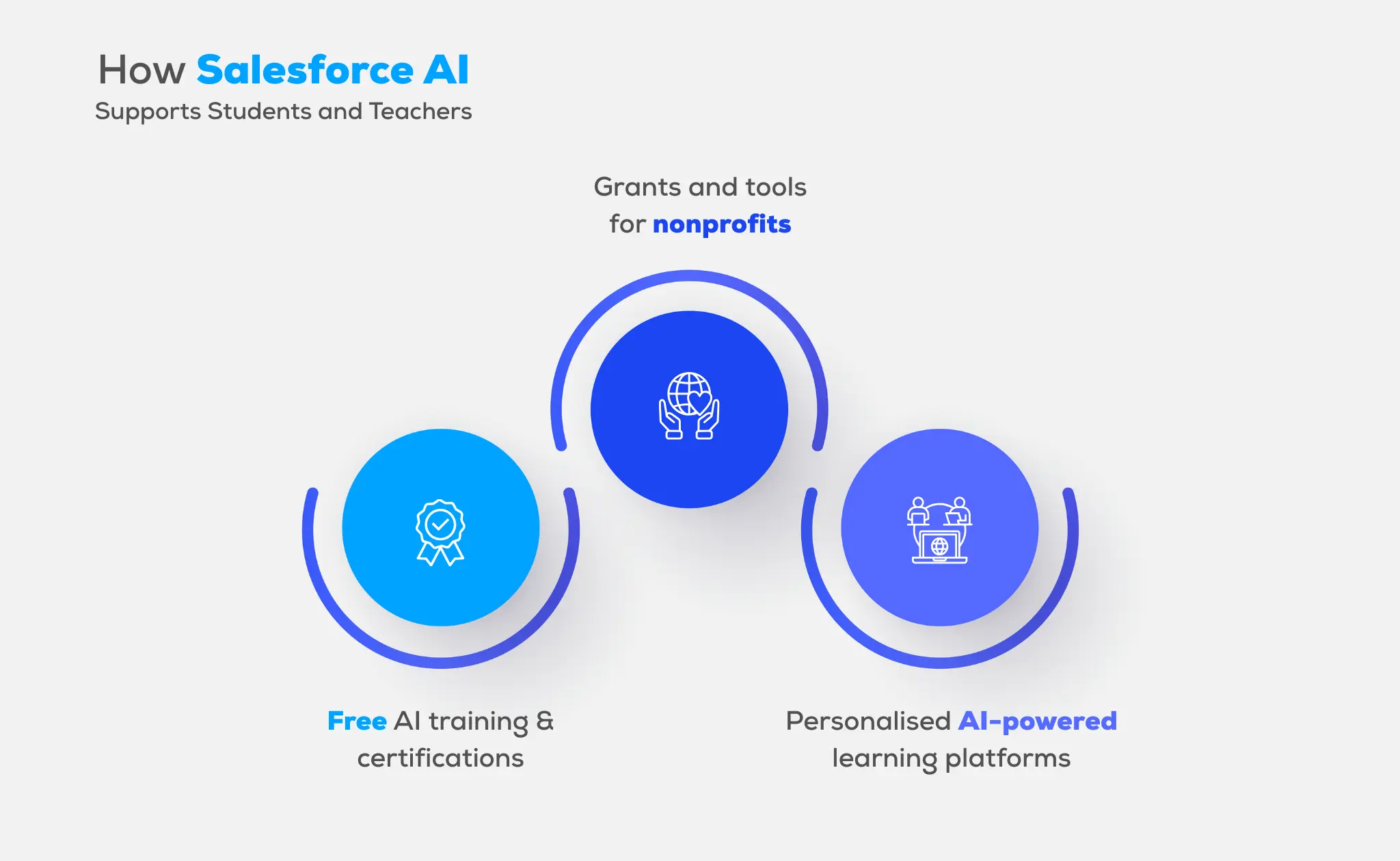
Training and Resources for Educators
Teachers play a big role in helping students use AI, but many don’t feel ready. They need time, training, and the right tools to feel confident. Some common needs include:
- Easy-to-use AI tools for classrooms
- Professional development that fits their schedule
- Examples of how AI supports student learning
Salesforce AI helps by funding training programs that support teachers, not just students. Programs like the Teacher Development Trust use AI “practice students” so teachers can test lessons safely. These kinds of tools are great examples of education technology solutions that make teaching better, not harder.
Collaborations Enhancing Teaching Methods
Salesforce doesn’t do this work alone. It partners with nonprofits and educators to build real solutions. These partnerships help:
- Create AI tools that match what teachers need
- Train teachers in ways that make sense for their classrooms
- Make sure solutions work for schools with limited resources
Groups like CodePath.org and Per Scholas use Salesforce’s tools to make learning faster and easier. These collaborations show how using Salesforce AI to provide equal learning opportunities isn’t just a goal—it’s a team effort.
These examples show that education technology solutions can be simple, helpful, and human-centred. When teachers feel ready, they can use AI to help more students succeed. That’s how we build access to digital resources and smart tech that works for everyone.
Find out how to choose the Right Tech Training Programs for your school or district.
The Secret: Intentional, Inclusive Collaboration
The key to bridging the digital divide with AI isn’t any single product or platform—it’s collaboration. That means schools, tech companies, governments, and communities must work together.
Salesforce AI leads by example. Through grants, partnerships, and training, the company shows how tech can help people, not replace them. Its education technology solutions support students, teachers, and nonprofits who know their communities best.
Programs like the AI for Impact Accelerator don’t just fund ideas. They bring people together to build smart tools that serve real needs. This kind of work shows how Salesforce AI bridges the digital divide in schools by putting people first and working together.
When AI is built with care and used with purpose, it becomes a bridge, not a wall.
Conclusion
The digital divide in education is one of the biggest problems schools face today. With smart tools, strong partnerships, and a focus on fairness, Salesforce AI is showing what’s possible.
From boosting technology access for underserved students to supporting teachers and creating better lessons, Salesforce is helping lead the way in bridging the digital divide for education. The work isn’t done, but the path is clear.
To move forward, we need more teamwork, smart tools, and bold ideas. Let’s focus on giving every student the tools they need to grow. After all, using AI in Salesforce to provide equal learning opportunities is not just a tech goal—it’s a human one.
Every student deserves a fair chance. And AI can help create equal opportunities for all students.

